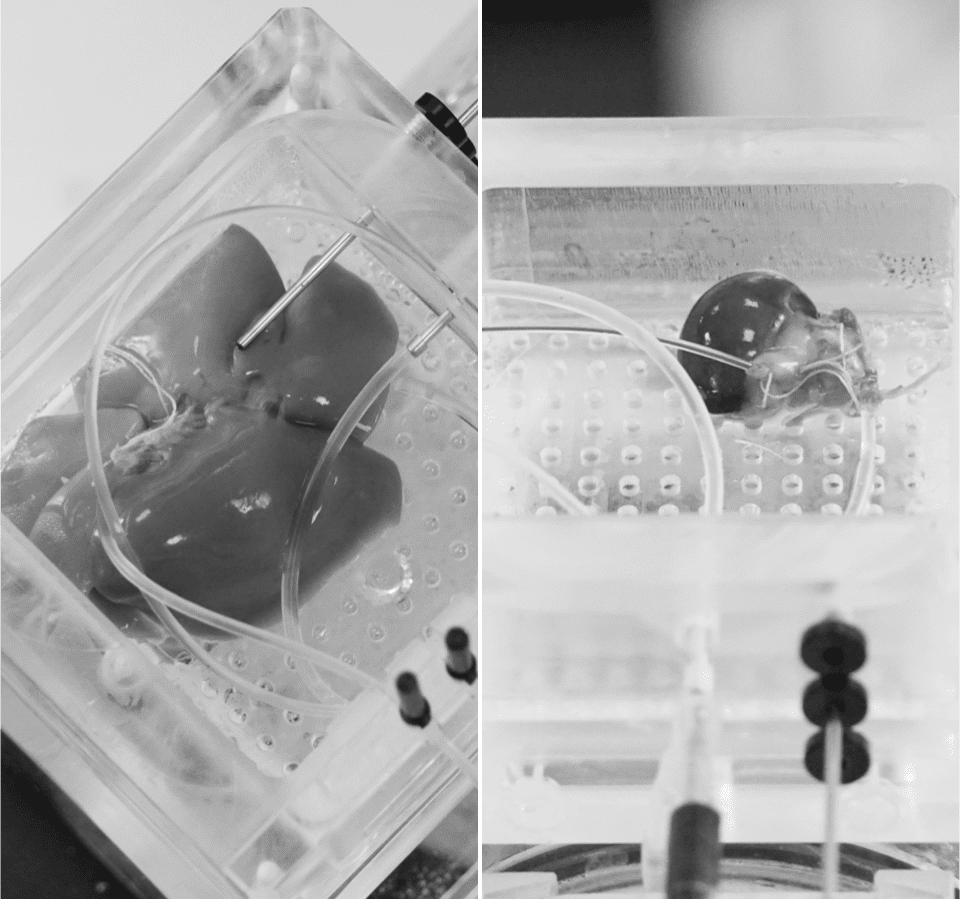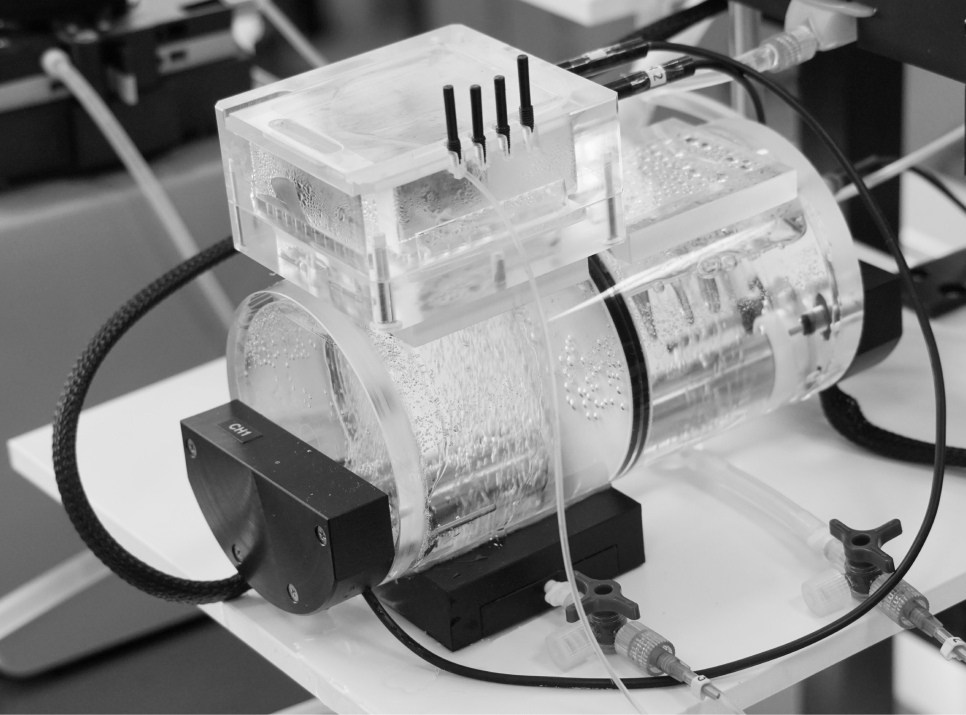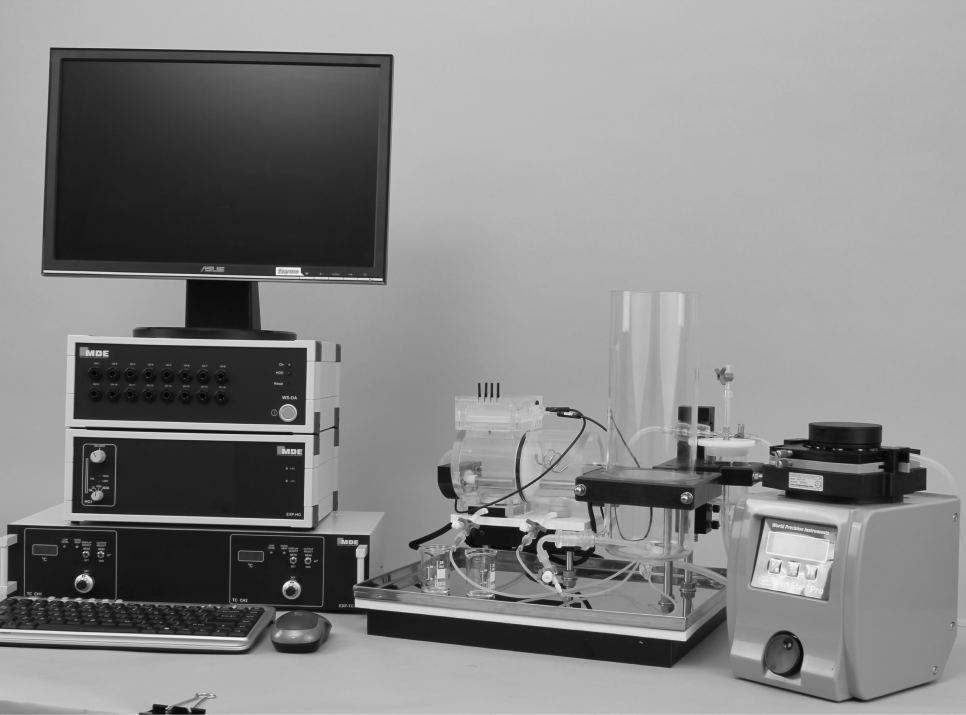Liver & Kidney Perfusion Setups

Liver & Kidney Perfusion setups

The MDE isolated liver or kidney perfusion system provides researchers with a versatile and precise tool for studying organ function and pharmacological processes. By allowing the precise manipulation of perfusate composition, this system facilitates investigations into drug metabolism, organ function, and responses to various interventions.
The system maintains the isolated organ function in an evaporation chamber lying horizontally. This means that the whole isolated organ is not hanging in an unsupported position, so the vasculature is not deformed by twisting or weight. Additionally, the organ is not immersed in a buffer liquid, so extra hydrostatic pressure does not affect the intravascular pressure inside the organ.

MDE isolated liver or kidney perfusion system offers researchers a powerful tool for conducting sophisticated experiments in transplantation research, pharmacology, and organ physiology.


- The main advantage of the MDE isolated liver and kidney perfusion setups lies in their innovative design and functionality, providing several key benefits:
- Preservation of Organ Function: The system maintains isolated organ function within a horizontally placed evaporation chamber, preventing deformation of the organ’s vasculature and ensuring optimal functionality.
- Prevention of Intravascular Pressure Build-up: By not immersing the organ in a buffer liquid, the system avoids the buildup of extra hydrostatic pressure, particularly crucial for isolated liver perfusion to maintain low intravascular pressure and prevent injury to hepatic vessels.
- Continuous Pressure Monitoring: The pressure inside the organ is continuously monitored by online software, enabling prompt detection of any subtle changes and ensuring experimental integrity.
- Versatile Applications: The system is suitable for investigating the effects of drugs and toxins on the vascular system of any organ, providing valuable insights into pharmacological and toxicological mechanisms.

- Investigation of Organ Functions: It facilitates the study of organ functions such as hepatic metabolism, bile secretion, and urine secretion, contributing to a comprehensive understanding of physiological processes.
- Mitigation of Experimental Risks: Organ preparations are safeguarded against thrombosis, embolism, or cardiovascular failure, common risks in in situ perfusion studies, ensuring reliable experimental outcomes.
- Controlled Perfusion and Temperature: The perfusion pump-controlled flow of buffers and precise temperature control of both perfusion buffer and the evaporation chamber maintain optimal conditions for organ viability and functionality.
- Sample Collection for Analysis: The relatively low perfusion buffer volume allows for the collection of bile, urine, and organ-passed buffer fractions, facilitating qualitative or quantitative analysis of substances such as drugs, drug metabolites, and hepatic enzymes.

